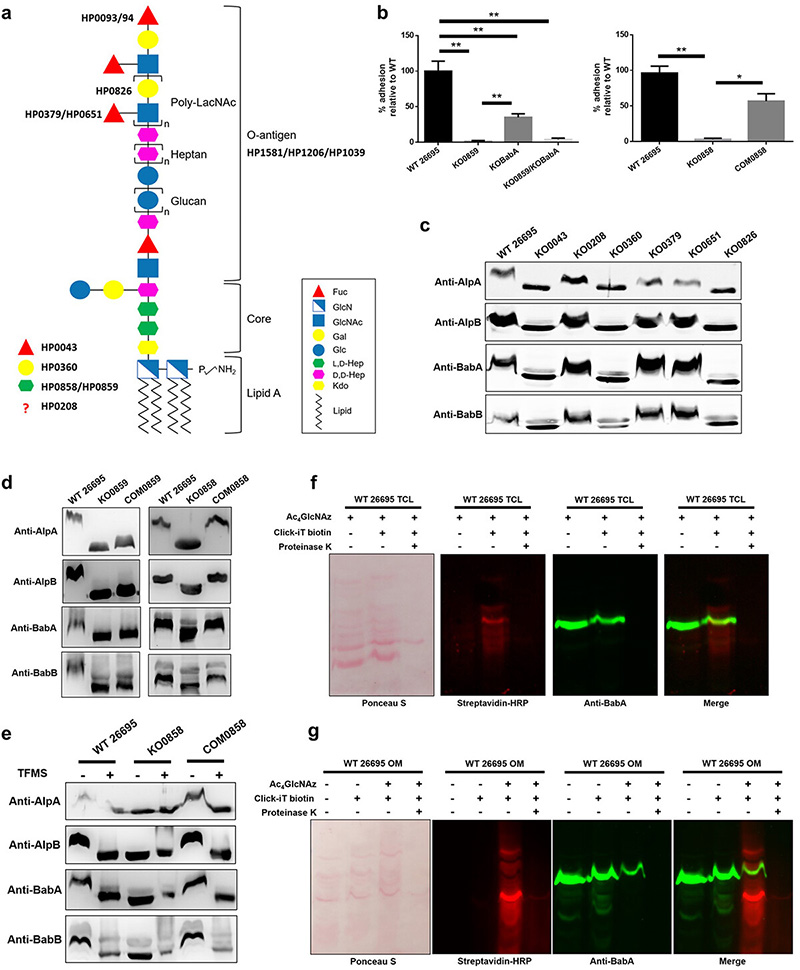
 中央研究院 生物化學研究所
中央研究院 生物化學研究所
Helicobacter pylori infection is associated with the development of several gastric diseases including gastric cancer. To reach a long-term colonization in the host stomach, H. pylori employs multiple outer membrane adhesins for binding to the gastric mucosa. However, due to the redundancy of adhesins that complement the adhesive function of bacteria, targeting each individual adhesin alone usually achieves nonideal outcomes for preventing bacterial adhesion. Here, we report that key adhesins AlpA/B and BabA/B in H. pylori are modified by glycans and display a two-step molecular weight upshift pattern from the cytoplasm to the inner membrane and from the inner membrane to the outer membrane. Nevertheless, this upshift pattern is missing when the expression of some enzymes related to lipopolysaccharide (LPS) biosynthesis, including the LPS O-antigen assembly and ligation enzymes WecA, Wzk, and WaaL, is disrupted, indicating that the underlying mechanisms and the involved enzymes for the adhesin glycosylation are partially shared with the LPS biosynthesis. Loss of the adhesin glycosylation not only reduces the protease resistance and the stability of the tested adhesins but also changes the adhesin-binding ability. In addition, mutations in the LPS biosynthesis cause a significant reduction in bacterial adhesion in the in vitro cell-line model. The current findings reveal that H. pylori employs a general protein glycosylation system related to LPS biosynthesis for adhesin modification and its biological significance. The enzymes required for adhesin glycosylation rather than the adhesins themselves are potentially better drug targets for preventing or treating H. pylori infection.
